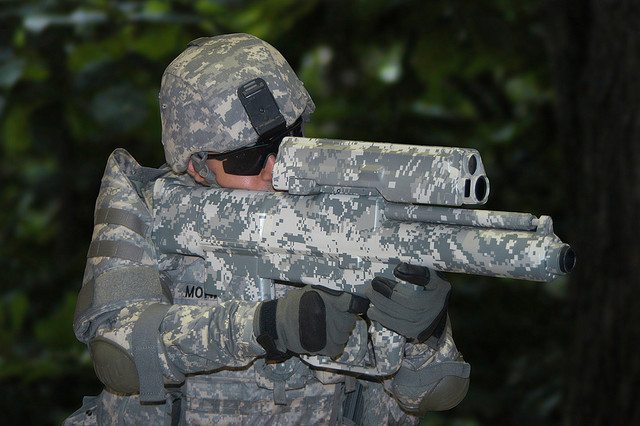The Association of the U.S. Army’s Institute of Land Warfare launched its 2011 Winter Symposium and Exposition here, yesterday, with panels and speakers focusing on emerging technologies.
Throughout the symposium, hundreds of defense companies opened exhibits that highlight new capabilities available to the Army as well as future prototypes ranging from hand-held weaponry to missile technology to protective combat wear and lightweight frameless vehicle prototypes.
The symposium opened with a presentation by Malcolm R. O’Neill, assistant secretary of the Army for Acquisition Logistics and Technology, who called for greater efficiency in the acquisition process, noting that on average it has taken about seven years to get the latest technology to the field.
Marilyn M. Freeman, deputy assistant secretary of the Army (Research and Technology), said science and technology will provide focus and solutions to close high-priority gaps in air, ground and Soldier systems. She added that the most complex weapon system is still the Soldier and that they need all the help science and technology has to offer to continue as a dominant force and peacekeeper.
Challenging Army leadership and the defense industry, Freeman told the audience to bring their ideas and thoughts forward: “My challenge to you is to be a partner to change.”
Brig. Gen. Peter N. Fuller, Program Executive Office Soldier, discussed Soldier lethality, survivability and concerns over the weight load Soldiers are carrying. Fuller first addressed weapon improvements, such as the M4 carbine, which will sport a heavier barrel that will give Soldiers a higher rate of fire and will have flash suppressors.
He also noted the M240L medium machine gun (light) presently being fielded in Afghanistan is lighter than the M240B by nearly 20 percent and is constructed largely of lightweight titanium. Also being fielded since last month is the XM2010 enhanced sniper rifle which is replacing the M24 sniper system with a retooled barrel that fires Winchester Magnum .300 ammunition to provide 50-percent improved effective range.
Fuller said the XM25 Individual Airburst Weapon System is also in Afghanistan and had become a hit with Soldiers who had nicknamed it “the punisher” for its effectiveness. The Smart weapon fires .25-caliber grenades designed to explode in midair and has a range of up to 1,000 yards.
Survivability projects included a generation II Improved Outer Tactical Vest, which along with the enhanced combat helmet, are both lighter. Fuller noted new fire-resistant materials are being used in uniforms to protect Soldiers from head to toe. Enhanced night-vision goggles and the new Afghanistan camouflage pattern have also been added to help Soldiers in the operating environment.
A major concern to Fuller is the additional weight that each new improvement to lethality and survivability brings to the Soldier. He said the challenge will be to balance evolutionary and revolutionary changes.
“Not all Soldiers need the same equipment,” he said.










